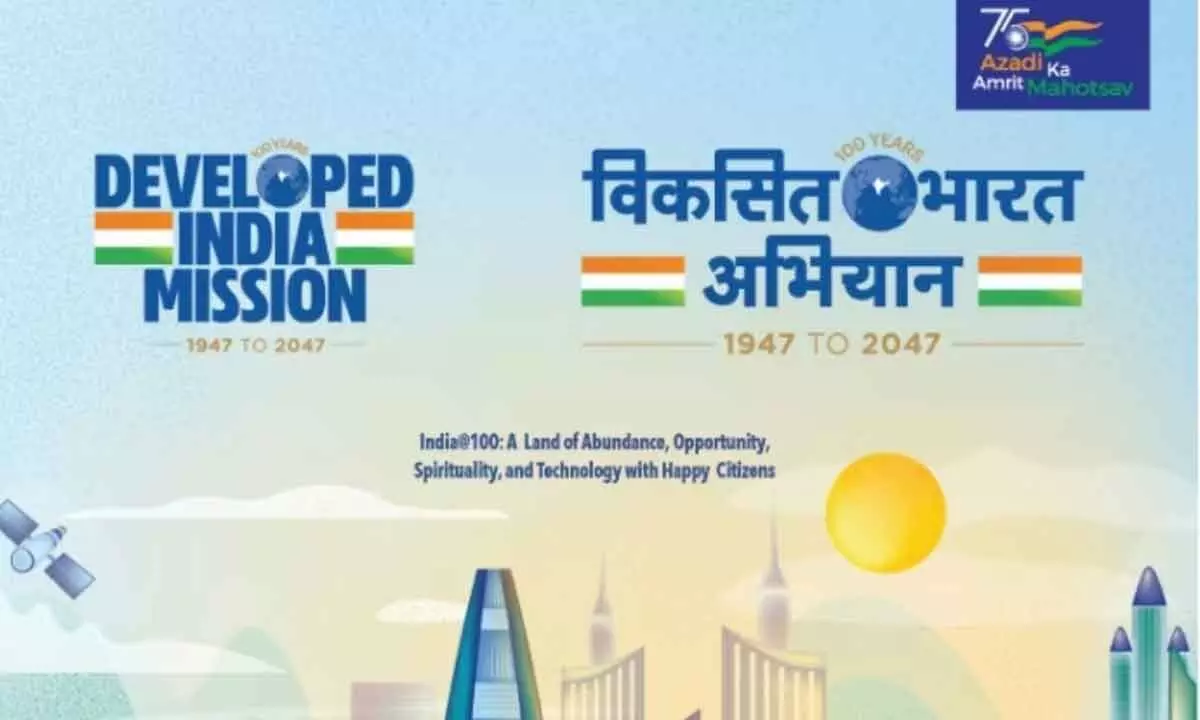Interim Budget 2024: A prelude to prosperity and inclusivity for Viksit Bharat
Gearing up for a vibrant Bharat in harmony with nature, modern infrastructure and opportunities
image for illustrative purpose

The budget aspires not only for economic growth but also for a 'Blue economy,' further aligning with sustainable development objectives with specific emphasis on empowerment of the poor and the middle class
Several factors contribute to India's trajectory towards a third largest economy by 2030. One of the primary drivers is infrastructure with a large workforce and consumer market. The country's diverse sectors, including information technology, agriculture, manufacturing and services, play their own respective pivotal roles in economic development.
The interim budget for 2024-2025 lays the foundation for a transformative year ahead, with a focus on prosperity, inclusivity and sustainable development.
Finance Minister Nirmala Sitharaman's strategic allocations and visionary goals aim to propel India towards a brighter and more resilient economic future.
The Budget for 2024-25, reflecting a strong commitment to economic growth, estimates total expenditure at ₹47,65,768 crore, with total capital expenditure at ₹11,11,111 crore – a 16.9 per cent increase over RE 2023-24. This will aid sustainable development with a commitment to 'Net Zero' by 2070, with initiatives in renewable energy, CNG, biogas adoption and strengthening the e-vehicle ecosystem. Infrastructure and investment will see implementation of major railway corridor programs, promotion of foreign investment, expansion of airports, and comprehensive development of new airports.
A vision for ‘Viksit Bharat’ a prosperous Bharat in harmony with nature, modern infrastructure, and opportunities for all shall be achieved.
The Finance Minister emphasized on dedicated freight corridors, along with these new economic corridors. The budget addresses crucial aspects of infrastructure development, focusing on the expansion of India's railway network, which will play a pivotal role in accelerating the GDP and reducing overall logistic costs. The corridors include an energy, mineral and cement corridor, a port connectivity corridor and a high traffic density corridor. The announcement of three major railway economic corridors signifies a strategic move towards enhancing connectivity and reducing logistical costs. As part of the initiative to enhance railway safety and passenger convenience, 40,000 normal rail bogeys will be converted to Vande Bharat standards.
In line with India's commitment to achieving net-zero by 2070, many green initiatives have been proposed in the budget. Viability gap funding will be provided for harnessing offshore wind energy potential, contributing to the country's renewable energy goals. The budget aspires not only for economic growth but also for a 'Blue economy,' further aligning with sustainable development objectives with specific emphasis on empowerment of the poor and the middle class.
Notable highlights include the provision of 40,000 Vande Bharat bogies for regular trains and realising the promise of building two crore additional houses for the poor.
Overall, as the nation awaits the full budget later in the year, these initiatives set the stage for a promising and inclusive economic trajectory.
(The writer is Urban Planner and Chancellor of NICMAR University, Pune)

